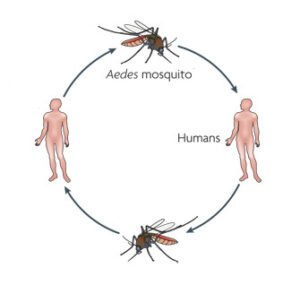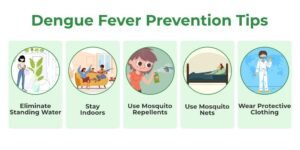Explore the global threat of dengue in this latest article. Learn symptoms, prevention tips, and WHO’s battle against this mosquito-borne menace. Stay informed, stay protected
Key facts :
Global Impact:
Dengue affects half of the world’s population, with an estimated 100–400 million infections annually, making it a significant global health concern.
Varied Symptoms:
While many dengue infections are asymptomatic or mild, severe cases can lead to fatal outcomes. Symptoms include high fever, severe headache, joint pains, nausea, and vomiting.
Escalating Burden:
Dengue’s global burden has surged from 505,430 cases in 2000 to a staggering 5.2 million in 2019, with underreporting and misdiagnosis contributing to the challenge.
Transmission Dynamics:
Dengue spreads through mosquito bites, primarily by the Aedes aegypti species. Additionally, human-to-mosquito transmission before symptoms manifest and rare cases of transmission through blood products and organ donation have been recorded.
Prevention Measures:
Key prevention methods include avoiding mosquito bites through protective clothing, nets, screens, and repellents. Dengvaxia, the approved vaccine, provides protection for those with evidence of past dengue infection.
Dengue

Dengue, often referred to as “break-bone fever,” is a viral infection transmitted by infected mosquitoes. This global health concern primarily thrives in tropical and subtropical climates, posing a significant risk to about half of the world’s population. The transmission occurs through the bite of the Aedes aegypti mosquito, with an estimated 100–400 million infections annually.
The Spectrum of Symptoms

While many individuals infected with this virus exhibit no symptoms or only mild illness, severe cases can occur, leading to fatalities. The common symptoms include high fever, severe headache, pain behind the eyes, muscle and joint pains, nausea, vomiting, swollen glands, and rash. Severe dengue symptoms, which may be fatal, include abdominal pain, persistent vomiting, bleeding gums or nose, rapid breathing, fatigue, and more.
Global Burden: A Growing Menace
The global burden of this disease has escalated dramatically, with reported cases soaring from 505,430 in 2000 to a staggering 5.2 million in 2019. However, these numbers likely underestimate the actual cases due to underreporting and misdiagnosis. It has become endemic in over 100 countries, with the Americas, South-East Asia, and the Western Pacific regions bearing the brunt. The increasing prevalence of dengue in new areas, including Europe, signifies its alarming spread.
Transmission Dynamics

It spreads primarily through the bite of infected mosquitoes, notably the Aedes aegypti species. However, human-to-mosquito transmission is also a crucial aspect, occurring even before symptoms manifest. Maternal transmission, though rare, presents risks during pregnancy, affecting birth outcomes. Other transmission modes, such as through blood products and organ donation, have been recorded in isolated cases.
Prevention and Control Measures

The key to managing this disease lies in preventing mosquito bites. Protective measures include wearing clothes that cover the body, using mosquito nets (preferably sprayed with repellent) during daytime sleep, employing window screens, and using mosquito repellents containing DEET, Picaridin, or IR3535. Rest, hydration, and pain management with acetaminophen are recommended for those infected. Notably, there is currently one approved vaccine, Dengvaxia, providing protection for those with evidence of past dengue infection.
WHO’s Battle
The World Health Organization (WHO) is at the forefront of tackling the dengue crisis. Its comprehensive response includes supporting countries in outbreak confirmation, offering technical guidance for effective management, and improving reporting systems. WHO also engages in training initiatives, formulates evidence-based strategies, and advocates for global efforts through the Global Vector Control Response (2017–2030). The organization collaborates with over 100 Member States to gather official records, publish guidelines, and recommend the development of new tools to combat dengue.
Empowering Against Dengue
Dengue’s global impact demands collective awareness and action. As we navigate this viral menace, understanding its symptoms, transmission dynamics, and preventive measures becomes crucial. The rise in dengue cases worldwide underscores the need for ongoing research, innovative solutions, and global collaboration. By staying informed and adopting preventive measures, individuals and communities can contribute to the global fight against dengue.
Also Read the latest news here:https://biziconic.com/mysterious-pneumonia-outbreak-strikes-chinese-schools-prompting-global-concerns/